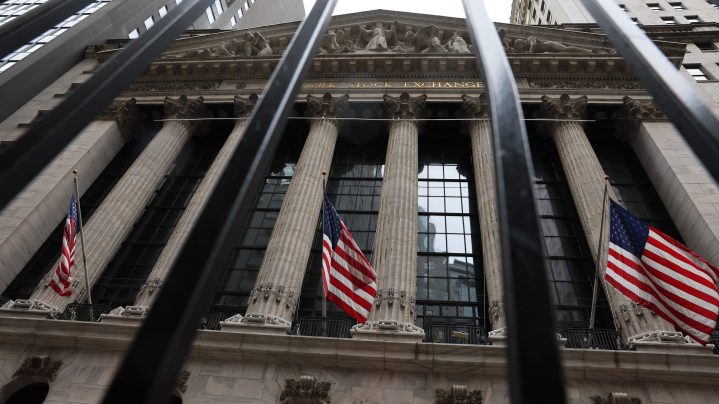
Interest rates on U.S. bonds are economic crystal balls — if you know how to read them
Interest rates on U.S. bonds are economic crystal balls — if you know how to read them

When we talk about the Federal Reserve setting interest rates, we’re talking about one interest rate — the amount banks charge each other to borrow money overnight.
The interest rates for other kinds of debt are set by the marketplace. That includes government debt, of which there’s a lot.
So when we tell you the interest rate on the 10-year Treasury note at the end of The Numbers, we’re telling you the interest rate that the bond market believes the bond should pay over the next 10 years. And lately, the market’s been pushing that number higher.
It’s now flirting with 4% — a rate it hasn’t seen since November of last year. As always with the bond market, that’s telling us something.
Treasury bill, T-note, T-bond — it’s all just you loaning money to the government and the government paying you interest. You can lend the government money for 10 years (that’s the 10-year that we’re always going on about), but you could also do just a month.
“One month, three months, six months, two years, five years, ten years,” said Stephen Laipply with BlackRock.
Now, you could just buy a one-month Treasury bill every single month, let it mature and get the interest. Then next month, maybe there’s a new interest rate. You could buy a new one, let it mature, get the interest, buy a new one, and so on and so forth. You could do that every month. Or you could just buy one that lasts a whole year. Or maybe two years or 10.
“And you should end up with the same yield if the market is accurately pricing,” Laipply said.
For this to work, the 10-year treasury yield has to guess what the one-month yield will be for the next 10 years. It’s the same for the five-year and the same for the two. Which means that the bond market has to predict the future.
“No. 1: What is going to happen with interest rates?” said Luis Alvarado, a global investment strategist with Wells Fargo Investment Institute.
Is the Fed going to raise interest rates? When will it stop? When will it lower them? The longer the Treasury bond, the more it has to predict.
“Also, what’s gonna happen with the economic cycle?” Alvarado said. “What do we expect the economy is going to be looking like?”
Bond yields also have to predict inflation, because it eats away at investment. “So those are, like, the components that are literally being combined right now in market expectations,” Alvarado added.
Earlier this year, yields started to go down because the market thought inflation was going to be solved quickly. Then we got a hot jobs report, followed by a strong retail sales report and a not-so-great inflation report. The future looked dimmer, so the yield started coming back up.
“What we’ve seen in recent weeks is adjustment to evidence that inflation is not on a pure downward trend, that there are going to be bumps in the road,” said Matthew Luzzetti, chief U.S. economist at Deutsche Bank.
Every Treasury bill, every T-note, every 10-year bond is really an economic crystal ball — if you know how to look at it, that is.
There’s a lot happening in the world. Through it all, Marketplace is here for you.
You rely on Marketplace to break down the world’s events and tell you how it affects you in a fact-based, approachable way. We rely on your financial support to keep making that possible.
Your donation today powers the independent journalism that you rely on. For just $5/month, you can help sustain Marketplace so we can keep reporting on the things that matter to you.

















